
How to Remove White Mold From Succulents: Essential Tips and Tricks

If you are a plant enthusiast, you may have encountered the problem of white mold on your succulents. Succulents are popular plants known for their ability to store water in their leaves and stems, making them low-maintenance and perfect for indoor gardening. However, they are not immune to common plant diseases, and white mold can be a troublesome issue to deal with. White mold, also known as powdery mildew, is a fungal infection that affects many types of plants, including succulents. It appears as a white, powdery substance on the leaves and stems, and if left untreated, it can damage and kill your plants.
We will discuss essential tips and tricks on how to remove white mold from succulents. We will explore the causes and symptoms of white mold, as well as preventive measures to avoid future outbreaks. Additionally, we will provide step-by-step instructions on how to safely and effectively remove white mold from your succulents using natural remedies and fungicides. By following these tips, you can ensure the health and longevity of your succulents and enjoy their beauty for years to come.
- Use a soft brush to gently remove the white mold from the succulent leaves
- Apply a mixture of water and hydrogen peroxide to kill the mold and prevent it from spreading
- Keep the succulent in a well-ventilated area to prevent the mold from returning
- Avoid overwatering the succulent, as excess moisture can contribute to mold growth
- Inspect the succulent for signs of mold
- Isolate the affected succulent
- Prune and dispose of affected plant parts
- Treat the succulent with a fungicide
- Improve air circulation and reduce humidity
- Maintain proper watering and drainage
- Keep the succulent clean and dust-free
- Monitor and maintain optimum growing conditions
- Quarantine any infected succulents to prevent the spread of mold to other plants
- Inspect the affected succulents and remove any visibly infected parts
- Treat the remaining succulents with a natural fungicide
- Prevent future mold outbreaks by improving growing conditions
- Ensure the succulent receives adequate sunlight to promote healthy growth and prevent mold
- Consider repotting the succulent in fresh, well-draining soil to eliminate any mold spores present in the old soil
- Use a fungicide specifically designed for plants to treat severe cases of white mold on succulents
- Frequently Asked Questions
Use a soft brush to gently remove the white mold from the succulent leaves
White mold can be a common issue for succulent owners. It not only affects the appearance of your plants but can also harm their overall health. Fortunately, there are several effective ways to remove white mold from succulents. One of the easiest methods is to use a soft brush to gently remove the mold from the leaves.
To start, you will need a soft-bristled brush, such as a clean paintbrush or a toothbrush. Make sure the brush is clean and dry before you begin. Carefully inspect the affected succulent leaves and identify the areas with white mold growth.
Once you have identified the moldy areas, gently brush the affected leaves in a circular motion. Apply light pressure to avoid damaging the leaves or stems of the succulent. The goal is to dislodge the mold from the surface of the plant without causing any harm.
As you brush, you may notice that the white mold flakes off or loosens. Be careful not to spread the mold to other parts of the succulent or other plants nearby. It's important to brush the mold away from the plant and collect it using a tissue or paper towel.
 Understanding the Causes of Spider Web-Like Growths in Succulents
Understanding the Causes of Spider Web-Like Growths in SucculentsAfter brushing off the white mold, take a moment to examine the succulent for any remaining traces. If you notice any stubborn mold spots, you can repeat the brushing process until the mold is completely removed.
Important tip: Remember to clean the brush thoroughly after each use to prevent the spread of mold spores. You can wash the brush with warm soapy water and let it air dry before using it again.
By using a soft brush to remove white mold from your succulents, you can effectively eliminate the unsightly growth and promote the health of your plants. Regular inspection and prompt action can help prevent mold from spreading and causing further damage to your succulents.
Apply a mixture of water and hydrogen peroxide to kill the mold and prevent it from spreading
To effectively remove white mold from your succulents, it is important to take immediate action. One effective method is to create a mixture of water and hydrogen peroxide. This powerful combination not only kills the mold but also prevents it from spreading further.
Start by preparing your mixture. Combine one part hydrogen peroxide with three parts water in a spray bottle. Make sure to use a 3% hydrogen peroxide solution, as higher concentrations may damage your plants.
Once your mixture is ready, gently mist it over the affected areas of your succulents. Be thorough in your application, ensuring that all visible mold is covered. The hydrogen peroxide will work to kill the mold spores on contact.
After applying the mixture, allow it to sit on the succulents for about 10-15 minutes. This gives the hydrogen peroxide enough time to penetrate the mold and start breaking it down.
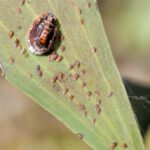 Effective Solutions for Eliminating Mealy Bugs on Succulent Plants
Effective Solutions for Eliminating Mealy Bugs on Succulent PlantsAfter the waiting period, gently wipe away the mold with a clean, damp cloth. Be careful not to rub too vigorously, as succulents are delicate plants. If the mold is stubborn and doesn't easily wipe away, try using a soft-bristled brush to gently scrub the affected areas.
Once you've removed the mold, it's important to take preventive measures to avoid its return. One way to do this is by adjusting your watering habits. Overwatering can create a moist environment that encourages mold growth. Ensure that your succulents are receiving the right amount of water, allowing the soil to dry out between waterings.
Additionally, it's crucial to provide adequate air circulation around your succulents. Proper ventilation helps to prevent the buildup of humidity, which can contribute to mold growth. Consider placing your plants in a well-ventilated area or using a fan to keep the air moving.
Regularly inspect your succulents for any signs of mold or other plant diseases. Early detection and prompt action are key to preventing the spread of mold and preserving the health of your succulents.
Key Takeaway: Applying a mixture of water and hydrogen peroxide is an effective method to remove white mold from succulents. Take preventive measures such as adjusting watering habits and providing adequate air circulation to avoid mold recurrence.
Keep the succulent in a well-ventilated area to prevent the mold from returning
If you want to effectively remove white mold from your succulents, it is crucial to keep the plants in a well-ventilated area. This is because mold thrives in damp and stagnant environments. By providing good air circulation, you can prevent the mold from returning and spreading to other plants.
 Understanding the Factors behind Succulent Death Blooms
Understanding the Factors behind Succulent Death BloomsAvoid overwatering the succulent, as excess moisture can contribute to mold growth
One of the main causes of white mold growth on succulents is overwatering. Succulents are desert plants that thrive in dry conditions, so it is important to avoid overwatering them. Excess moisture in the soil creates a favorable environment for mold to grow and thrive.
To prevent overwatering, make sure to let the soil dry out completely between waterings. Succulents are adapted to store water in their leaves and stems, so they can withstand periods of drought. Testing the moisture level in the soil is crucial. Stick your finger about an inch into the soil, and if it feels dry, it's time to water your succulent.
Inspect the succulent for signs of mold
Regularly inspect your succulent for any signs of white mold. Look for fuzzy, cotton-like growth on the leaves, stems, or soil surface. Mold can also manifest as white spots or a powdery substance on the plant. These are indications that your succulent has been affected by mold and requires immediate attention.
Isolate the affected succulent
If you notice white mold on one of your succulents, it is crucial to isolate it from the rest of your plant collection. Mold can easily spread to other plants, so removing the affected succulent from its surroundings will prevent further contamination.
Prune and dispose of affected plant parts
To effectively remove white mold from your succulent, you will need to prune and dispose of the affected plant parts. Carefully examine the plant and remove any leaves, stems, or roots that show signs of mold. It is essential to use clean and sterilized tools to prevent the spread of mold spores.
Treat the succulent with a fungicide
After pruning, it is recommended to treat the succulent with a fungicide to eliminate any remaining mold spores. There are various fungicides available in the market specifically formulated for succulents. Follow the instructions provided by the manufacturer to ensure safe and effective application.
Improve air circulation and reduce humidity
Mold thrives in warm and humid environments, so improving air circulation around your succulents can help prevent mold growth. Place your plants in an area with good ventilation or use a fan to promote air movement. Additionally, avoid overcrowding your succulents, as this can trap moisture and increase humidity levels.
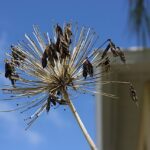 Can a Death Bloom Succulent Be Saved or is it Too Late?
Can a Death Bloom Succulent Be Saved or is it Too Late?Maintain proper watering and drainage
Preventing waterlogged soil is crucial for keeping mold at bay. Ensure your succulents are planted in well-draining soil and have proper drainage in their pots. This will allow excess water to escape and prevent the soil from becoming excessively moist, reducing the risk of mold growth.
Keep the succulent clean and dust-free
Mold spores can easily attach to dust particles, so keeping your succulent clean and dust-free can help prevent mold infestation. Gently wipe the leaves with a soft cloth or brush to remove any accumulated dust. Regular cleaning will not only improve the plant's appearance but also create an unfavorable environment for mold to grow.
Monitor and maintain optimum growing conditions
Succulents thrive in specific growing conditions, so it is important to provide them with optimal care. Ensure your succulent receives adequate sunlight, as this helps to prevent excess moisture and mold growth. Additionally, maintaining a consistent temperature and avoiding extreme fluctuations can contribute to the overall health and resilience of your succulent.
By following these essential tips and tricks, you can effectively remove white mold from your succulents and prevent its recurrence. Remember to be proactive in monitoring your plants and taking necessary measures to maintain a healthy and mold-free environment for your succulents to thrive.
Quarantine any infected succulents to prevent the spread of mold to other plants
One of the first steps in dealing with white mold on succulents is to quarantine any infected plants. This is crucial to prevent the spread of mold to other healthy plants in your collection.
Start by identifying the succulents that are showing signs of white mold. Look for fuzzy, powdery patches or spots on the leaves, stems, or soil surface. It's important to act quickly to prevent the mold from spreading further.
Once you've identified the infected plants, carefully remove them from their current location and isolate them in a separate area. This can be a separate room or a dedicated space with proper ventilation.
 Understanding the Cause: Why is My Succulent's Base Turning White?
Understanding the Cause: Why is My Succulent's Base Turning White?Keep the infected succulents away from your healthy plants for the time being. This will minimize the chances of the mold spores spreading and infecting other plants in your collection.
Inspect the affected succulents and remove any visibly infected parts
After quarantining the infected succulents, it's time to carefully inspect them and remove any visibly infected parts. This process will help contain the mold and prevent it from spreading further.
Put on a pair of disposable gloves to protect your hands from coming into direct contact with the mold. Carefully examine each succulent, paying close attention to the leaves, stems, and any other affected areas.
Using a pair of clean and sharp scissors, cut off any parts of the succulent that show signs of white mold. Make sure to cut a few inches below the visible mold to ensure that you remove all traces of the infection.
Dispose of the infected parts in a sealed plastic bag to prevent the mold spores from spreading. Do not compost the infected material, as this can lead to further contamination.
Treat the remaining succulents with a natural fungicide
Once you have removed the visibly infected parts from the succulents, it's important to treat the remaining plants to prevent any residual mold from regrowing.
Using a natural fungicide can be an effective way to combat white mold on succulents. Look for a product that is safe for use on succulents and follow the instructions on the label.
 Causes of Holes in Succulent Leaves: A Comprehensive Guide
Causes of Holes in Succulent Leaves: A Comprehensive GuideApply the fungicide to the remaining parts of the succulents, focusing on the areas that were previously affected by the mold. Make sure to cover all surfaces and allow the product to dry completely before returning the plants to their original location.
Repeat the treatment as recommended by the fungicide manufacturer to ensure that any residual mold spores are eliminated.
Prevent future mold outbreaks by improving growing conditions
Prevention is key when it comes to dealing with white mold on succulents. By improving the growing conditions, you can create an environment that is less favorable for mold growth.
Here are a few tips to help prevent future mold outbreaks:
- Proper watering: Avoid overwatering your succulents, as excessive moisture can create a breeding ground for mold. Allow the soil to dry out between waterings, and make sure the pots have good drainage.
- Adequate air circulation: Provide proper ventilation and air circulation around your succulents. This will help prevent the buildup of excess humidity, which can contribute to mold growth.
- Healthy soil: Use well-draining soil specifically formulated for succulents. This will help prevent waterlogging and reduce the risk of mold growth.
- Cleanliness: Regularly remove any fallen leaves or debris from the soil surface. This will help eliminate potential hiding places for mold spores.
By implementing these preventive measures, you can create a healthier environment for your succulents and reduce the risk of future mold outbreaks.
Remember, early detection and prompt action are crucial when dealing with white mold on succulents. By following these essential tips and tricks, you can effectively remove the mold and prevent its recurrence, allowing your succulents to thrive in a mold-free environment.
Ensure the succulent receives adequate sunlight to promote healthy growth and prevent mold
 Safe and Kid-Friendly: Non-Toxic Succulents for Pets and Children
Safe and Kid-Friendly: Non-Toxic Succulents for Pets and ChildrenOne of the most important factors in preventing and removing white mold from succulents is ensuring that they receive adequate sunlight. Succulents thrive in bright and indirect sunlight, so it's crucial to place them in a location where they can get at least 6 hours of sunlight per day.
When succulents don't receive enough sunlight, they become weak and more susceptible to mold growth. Lack of sunlight can also cause the soil to remain damp for extended periods, creating the ideal conditions for white mold to thrive.
To promote healthy growth and prevent mold, place your succulents near a window with good natural light or use artificial grow lights if natural light is limited.
Provide proper ventilation to prevent excess moisture buildup
Another key factor in preventing white mold from affecting your succulents is ensuring proper ventilation. Good air circulation helps to reduce excess moisture buildup, which can lead to mold growth.
Avoid placing succulents in areas with poor airflow, such as closed terrariums or enclosed containers. Instead, opt for open containers or pots with drainage holes that allow air to circulate freely around the plants.
If you notice that the air is stagnant around your succulents, consider using a small fan to improve ventilation. A gentle breeze will help to prevent mold growth and keep your succulents healthy.
Water your succulents properly to avoid overwatering
Overwatering is one of the most common causes of mold growth in succulents. These plants have unique water requirements and can withstand drought-like conditions.
 Causes of Shriveled and Wrinkled Leaves in Succulents
Causes of Shriveled and Wrinkled Leaves in SucculentsWhen watering your succulents, it's crucial to follow a "soak and dry" method. This means thoroughly watering the plant until the water drains out from the bottom of the pot and then allowing the soil to dry completely before watering again.
Avoid letting the succulents sit in standing water, as this can lead to root rot and create a favorable environment for mold to develop.
Additionally, be mindful of the type of soil you use for your succulents. Well-draining soil is essential for preventing excess moisture retention and mold growth. Consider using a specialized succulent or cactus mix that promotes proper drainage.
Remove affected leaves and treat with a natural fungicide
If you notice white mold on your succulents despite your best efforts, it's crucial to take immediate action to prevent further spread.
Start by removing any affected leaves or parts of the plant. Use clean, sharp scissors to make clean cuts and dispose of the infected plant material in sealed bags to prevent the mold spores from spreading.
Next, treat the remaining healthy parts with a natural fungicide. There are several options available, such as neem oil or a mixture of water and baking soda. Follow the instructions on the product label and apply the fungicide to the affected areas.
Regularly monitor your succulents after treatment to ensure that the mold doesn't return. If the mold persists or spreads, you may need to consider more aggressive treatment options or seek professional help.
 Succulent Health: Healthy vs Unhealthy - Spot the Difference
Succulent Health: Healthy vs Unhealthy - Spot the DifferenceRemember, prevention is key when it comes to white mold on succulents. By providing adequate sunlight, proper ventilation, watering correctly, and taking prompt action when necessary, you can keep your succulents healthy and mold-free.
Consider repotting the succulent in fresh, well-draining soil to eliminate any mold spores present in the old soil
If you notice white mold on your succulents, it's important to take action promptly to prevent it from spreading and causing harm to your plants. One effective method to tackle this issue is to consider repotting the succulent in fresh, well-draining soil. This will help eliminate any mold spores that may be present in the old soil.
When repotting, start by carefully removing the succulent from its current pot. Gently loosen the roots and shake off any excess soil. Inspect the roots for any signs of mold or rot, and trim away any affected areas using clean, sharp scissors or pruning shears.
Next, prepare a new pot with fresh soil. Choose a well-draining soil mix specifically formulated for succulents, as this will help prevent water from pooling around the roots and creating the ideal conditions for mold growth. Place a layer of the new soil at the bottom of the pot.
Now, carefully place the succulent into the new pot, making sure that the roots are spread out evenly. Fill in the remaining space around the roots with the fresh soil, gently pressing it down to ensure good contact with the roots.
After repotting, it's essential to establish a proper watering routine. Succulents are known for their ability to thrive in dry conditions, so it's crucial to avoid overwatering. Allow the soil to dry out completely between waterings, and make sure to water the plant at its base rather than from above. This will help prevent excess moisture from sitting on the leaves and creating a favorable environment for mold to develop.
Remember to place your newly repotted succulent in a well-lit area with plenty of indirect sunlight. Adequate light will help the plant thrive and strengthen its natural defenses against mold and other potential issues.
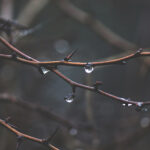 Understanding the Factors Behind Brown Stem in Succulents
Understanding the Factors Behind Brown Stem in SucculentsIn addition to repotting, it's important to keep an eye on the overall health of your succulent. Regularly inspect the leaves and stems for any signs of mold or other diseases. If you notice any suspicious growth or discoloration, take action promptly to prevent further damage.
By following these essential tips and tricks, you can successfully remove white mold from your succulents and ensure their continued health and beauty. Remember, prevention is key, so it's crucial to provide your succulents with the proper care and conditions they need to thrive.
Use a fungicide specifically designed for plants to treat severe cases of white mold on succulents
If your succulents are suffering from severe white mold, it's important to take immediate action to prevent further damage. One effective method is to use a fungicide that is specifically designed for plants.
A fungicide works by targeting and killing the mold spores, preventing them from spreading and causing more damage to your succulents. When choosing a fungicide, make sure to look for one that is labeled safe for use on succulents.
Before applying the fungicide, it's important to carefully read and follow the instructions provided by the manufacturer. This will ensure that you use the product correctly and achieve the best results.
When applying the fungicide, make sure to cover all affected areas on your succulents. This includes the leaves, stems, and any other parts that show signs of white mold. Remember to wear gloves and protective clothing to avoid direct contact with the fungicide.
After applying the fungicide, it's crucial to monitor your succulents closely. If the white mold persists or spreads, you may need to repeat the treatment or consider alternative methods.
Keep in mind that while fungicides can be effective in treating severe cases of white mold, prevention is always better than cure. Regularly inspect your succulents for any signs of mold and take immediate action if you spot any.
Key takeaways:
- Choose a fungicide specifically designed for plants that is safe for use on succulents.
- Read and follow the instructions provided by the manufacturer.
- Cover all affected areas on your succulents when applying the fungicide.
- Monitor your succulents closely and repeat the treatment if necessary.
- Prevention is key - regularly inspect your succulents and take immediate action if mold is spotted.
Frequently Asked Questions
1. What causes white mold to form on succulents?
White mold on succulents is often caused by excessive moisture and poor airflow, creating a favorable environment for mold growth.
2. How can I prevent white mold from forming on my succulents?
To prevent white mold, make sure to provide proper drainage for your succulents, avoid overwatering, and ensure good air circulation around the plants.
3. How do I remove white mold from my succulents?
To remove white mold, gently brush off the affected areas with a soft brush or cloth. If the mold persists, you can use a diluted solution of water and hydrogen peroxide to treat the affected plants.
4. Can I save a succulent infested with white mold?
In most cases, you can save a succulent infested with white mold by removing the affected parts and implementing preventive measures. However, if the mold has extensively damaged the plant, it may be difficult to revive it.
If you want to read more articles similar to How to Remove White Mold From Succulents: Essential Tips and Tricks, you can visit the Pests and Diseases category.

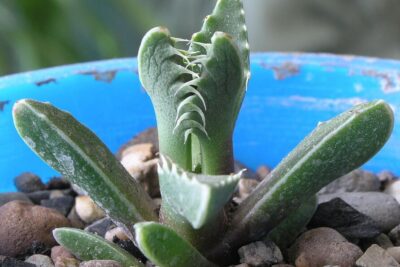

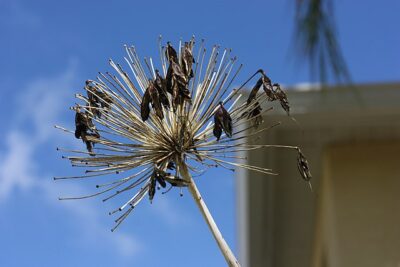
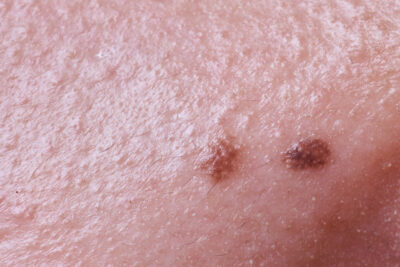
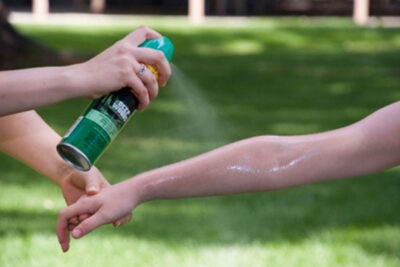
You Must Read